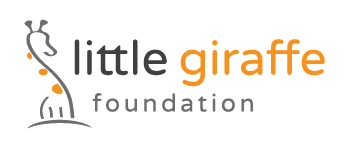
Little Giraffe Foundation
2021 Neonatal Research Grants
After long deliberations, Little Giraffe Foundation voted to fund 18 initiatives for 2021, totaling $45,000 – 3 Neonatal Research Grants to forward medical care for premature babies and 15 NICU Support Grants designed to improve the lives of the families and babies in the NICU.
2021 Neonatal Research Grants
Rush University Medical Center, Chicago, IL - $10,000 Awarded
Research: Preventing Metabolic Bone Disease of Prematurity
D. Rick Sumner, PhD – Co-PI, Professor & Chair, Cell & Molecular Medicine, Rush University Medical Center
Randy Buddington, PhD – Co-PI, Executive Director, Stonewall Research Facility, Louisiana State University Health Science Center
Premature birth impairs bone development as 80% of fetal bone mineral accrual occurs during the last trimester. Metabolic bone disease of prematurity is characterized by elevated fracture incidence, deficient skeletal development and has a prevalence of up to ~60%. The primary cause is likely calcium and phosphate deprivation as postnatal nutritional regimens do not match availability of these minerals through the placenta. Supplementation of minerals has not proven effective in previous studies. Recent studies have shown the importance of choline, an essential nutrient, to bone health, which may be of particular relevance since choline appears to be deficient in nutritional regimens for preterm infrants. We have recently found that the pig model of premature birth replicates many aspects of metabolic bone disease of prematurity. PI Sumner's lab, which focuses on bone biology, will collaborate with PI Buddington's lab which recently was funded by a grant from the Egg Nutrition Center to study neurodevelopment following use of an egg yolk based forumula in the preterm pig model. We will leverage this funding to determine if the egg yolk based formula mitigates the negative effects of preterm birth on metabolic bone disease of prematurity. We will accomplish this by directly examining bones from the experimental animals using state-of-the-art assays, including microcomputed tomography, Raman spectroscopy, mechanical testing, and determination of circulating levels of key markers of bone metabolism and turnover. We hope to show that the egg yolk based formula improves early post-natal bone growth in preterm pigs.
Boston Children's Hospital, Boston, MA - $10,000 Awarded
Research: Intraventricular macrophages: a potential treatment target for neonatal intraventricular hemorrhage
Miriam Zawadzki – Co-PI, Pathology, Boston Children's Hospital
Maria Lehtinen, PhD – Co-PI, Pathology, Boston Children's Hospital
Intraventricular hemorrhage (IVH) is a devastating neurological disorder that occurs in 15-20% of babies born before 32 weeks of pregnancy and can lead to lifelong neurological impairment1. The extent of disability is variable from infant to infant, but generally increases with the severity of the bleed. Damage to the developing brain by hemorrhage is thought to be due to the release of neurotoxic iron and iron-containing proteins by the red blood cells (RBCs)2,3. Currently, there are no available treatments that prevent or ameliorate the symptoms of IVH by targeting this underlying etiology. Because outcomes are variable, our strategy has been to investigate the natural protective responses to IVH that may be sufficient in a number of cases. One response to IVH is scavenging of iron by immune cells known as macrophages. Our preliminary work in a mouse model of IVH is consistent with this idea and therefore presents an exciting opportunity to explore the potential protective role of macrophage sequestration of iron, which could be exploited for future treatments. The proposed research clarifies the macrophage contributions to iron removal and IVH pathology, therefore laying the foundation for development of the first non-surgical treatment for IVH targeting these immune cell scavengers.
The Children's Regional Hospital at Cooper, Camden, NJ - $10,000 Awarded
Research: miR34a driven senescence as a novel pathology in Bronchopulmonary Dysplasia
Vineet Bhandari, MD - Co-PI, Division Head, Neonatology, Pediatrics, The Children's Regional Hospital at Cooper
Pragnya Das, PhD - Co-PI, Senior Scientist, Pediatrics, Cooper Research Institute
Preterm babies born at <28 weeks of gestation are often ventilated until the immature lung is capable enough to breathe in room air. This process of assisted breathing along with exposure to high concentrations of supplemental oxygen causes permanent damage to the immature lungs resulting in a pathological condition called Bronchopulmonary Dysplasia (BPD). BPD has complications that include pulmonary hypertension, neurodevelopmental delay, respiratory diseases that occur during infancy and extending up to adulthood. The classical hallmarks of BPD are simplified alveolar epithelium, dysregulated angiogenesis, increased cell death and decreased cell proliferation. Recently, it has been reported that prolonged hyperoxia exposure primes the lung cells towards a phase of stress-induced cellular senescence which also causes the BPD pulmonary phenotype. Very recently, microRNAs (miR) have been known to be involved in cellular senescence and we have found that miR34a, which is highly upregulated following hyperoxia exposure, is involved in driving the cells towards a senescent phase, thus impairing normal alveolar development. Hence, our main objective is to elucidate the mechanistic pathway of miR34a for the induction of senescence in lung alveolar epithelium that could lead to impaired alveolarization, with the possibility of reversing this disease phenotype with the use of miR34a inhibitor.
